
Creativity through motion: The human-centric research behind Formway Design’s award-winning task chairs
Creativity through motion: The human-centric research behind Formway Design’s award-winning task chairs
Share
From humble beginnings as a small scale general engineering workshop, Formway has become an award-winning, world-leading design studio. While they don’t consider themselves as a furniture design practice, it is their task chairs, which include the Life chair for Knoll, and most recently the Denn chair for Zenith, that put them on the map. As part of our focus on return to work and the changing nature of the office, Australian Design Review spoke with joint CEOs and heads of design Kent Parker and Paul Wilkinson, and project director, Chris Bisman to discover what it takes to design iconic chairs that inspire creativity through motion.
The origin story of Formway, based in Aotearoa New Zealand, begins in 1956 in a sleepy coastal town called Petone, 17 kilometres north of Wellington. Petone Engineering, as Formway was formerly known, was quietly and diligently manufacturing steel products, including simple steel furniture.
In 1978, through a partnership with Wellington Polytechnic – the industrial design school that would later amalgamate with Victoria University – Formway was born. This early partnership with a teaching institution, which was naturally focused on research, experimentation and innovation, became the bedrock of Formway’s rigorous approach to research, development and design excellence.
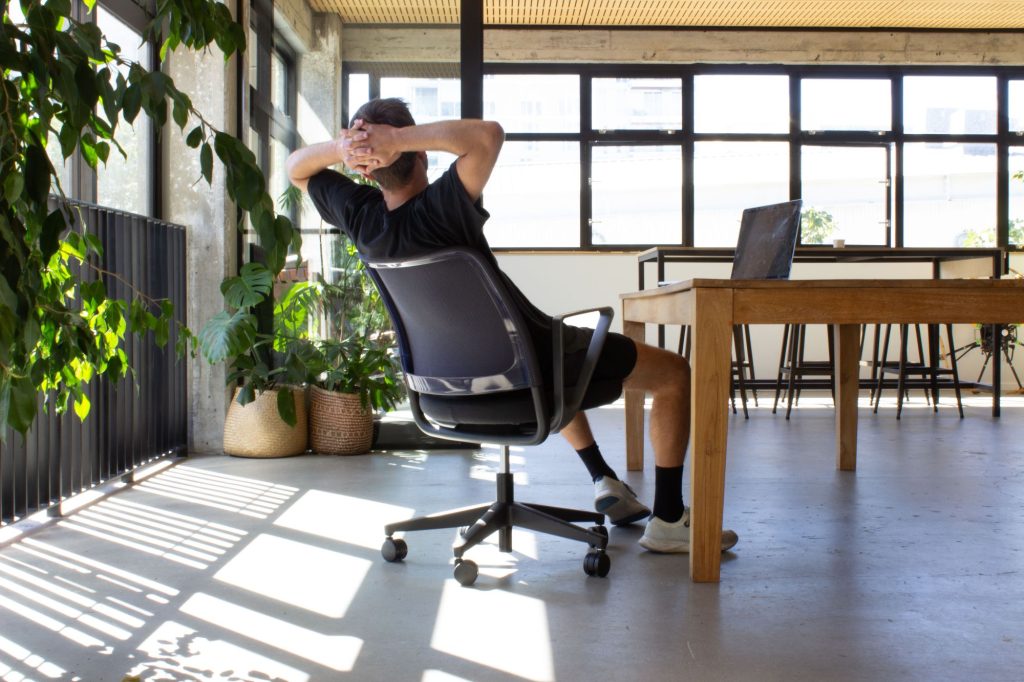
Bisman describes this research grounding, together with geographic isolation, as Formway’s strength, “giving them the clarity of focus to solve problems” and be able to design iconic chairs which have been sat on by a US President, Steve Jobs and film producers like John Barnett. Not to mention filling the offices of global giants such as Google and many corporate head offices across the US, Australia, Asia and New Zealand. In a little-known fact, which design enthusiasts will appreciate, their Life chair designed for Knoll is part of the permanent collection of furniture and design objects at MoMA. Not bad for a little design studio at the end of the world.
Ergonomics is more than perfect anatomical alignment
“We’ve got a pretty broad view of ergonomics at Formway”, says Wilkinson. “When we first launched Generation — a world-first multi-mode, multi-posture task chair — in the mid-90s [known as the Be in Australasia] we had a lot of ergonomists upset with what we were doing,” he says. “They told us that for a chair to be ergonomic, it had to hold people’s posture in a specific way. Yes, there are fundamentals of the human body and safety standards, and we apply all those, but the dynamics is the ergonomics.”
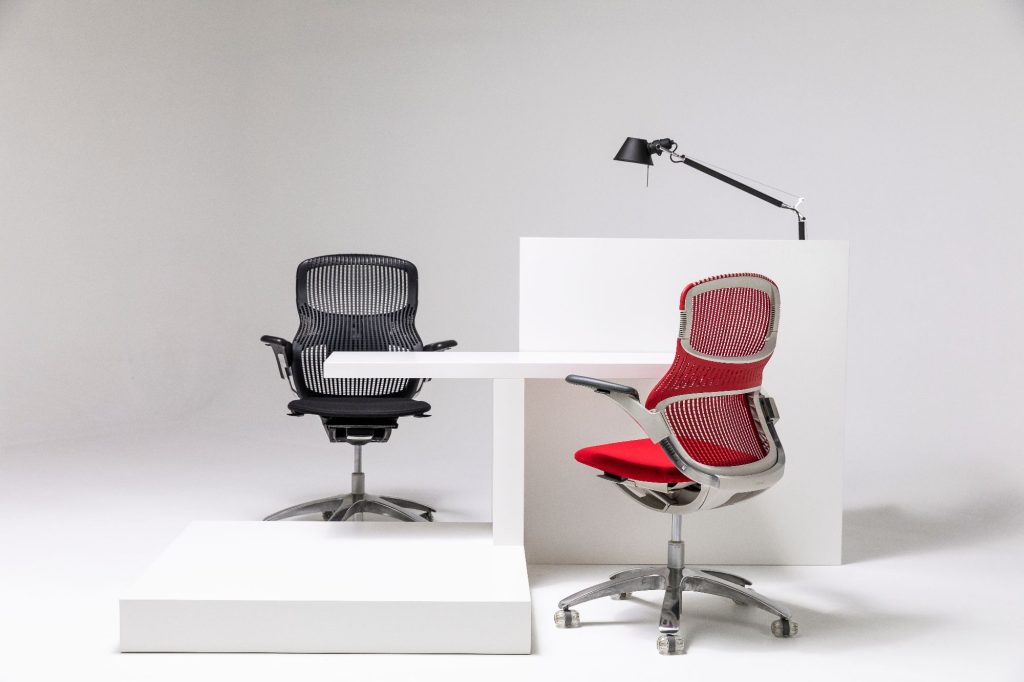
Formway’s research-led process has seen them gather countless hours of observational footage of people sitting and walking around their homes and offices as they go about their day. Through this real-world human-centric research, the team discovered that each of us performs hundreds of movements while seated. Reclining backwards, leaning forwards, shifting our weight around from side to side, folding a leg up underneath us, draping ourselves over an armrest. We hardly ever sit still. Traditional schools of thought would certainly rail against the acceptance of these ‘bad’ sitting postures. For Formway however, this data was a light bulb moment.
Backed by these observations and growing bodies of research that fidgeting also stimulates creativity, the designers at Formway asked themselves — how can we design a chair that supports movement intuitively? Taking this a step further, they asked, if we’re to design the best task chair in the world, what does it need to do and be?
“The dynamics is the ergonomics that we’re most interested in,” Wilkinson says. “Through our research, we know that the next posture is the best posture. We want people to keep moving, and there is also psychological ergonomics at work through movement. We communicate through body language. Our design approach supports a holistic view of what ergonomics is.”
The aforementioned Generation task chair — designed for Knoll in the early -2000’s, was the first chair Formway designed that answered these questions. At the time of its launch, the Generation [BE] chair was the first task chair in the world to bring intuitive, dynamic, flexible performance to all support elements of the chair, including the patented weight-compensated mechanism ‘Dynamic suspension’, the ‘flex back’ and the ‘Flex top’. These innovations enabled the chair to move intuitively with the user, rather than the user having to make manual adjustments dictated by the chair, which became Formway’s concept of active movement, one of their core design philosophies.
While many task chairs on the market today have some of these features, the fact that this revolutionary product came out of a small studio in Aotearoa proves that a laser-like focus engendered by isolation, combined with rigorous research and a human-centric approach, can change the course of design history.
Equal parts timeless design and innovative, sustainable materials
Fast forwarding three decades to the present moment, Formway remains at the forefront of the design industry. After four years of intense research, prototyping and testing, the Denn chair — designed by Formway for leading Australian commercial furniture company Zenith — was released to critical acclaim in 2023. On a technical level, the Denn chair introduced another world-first — active forward movement. This innovation allows for eight degrees of automatic forward shift, intuitively responding to and supporting what we all do so often — leaning forward on the edge of our seats.
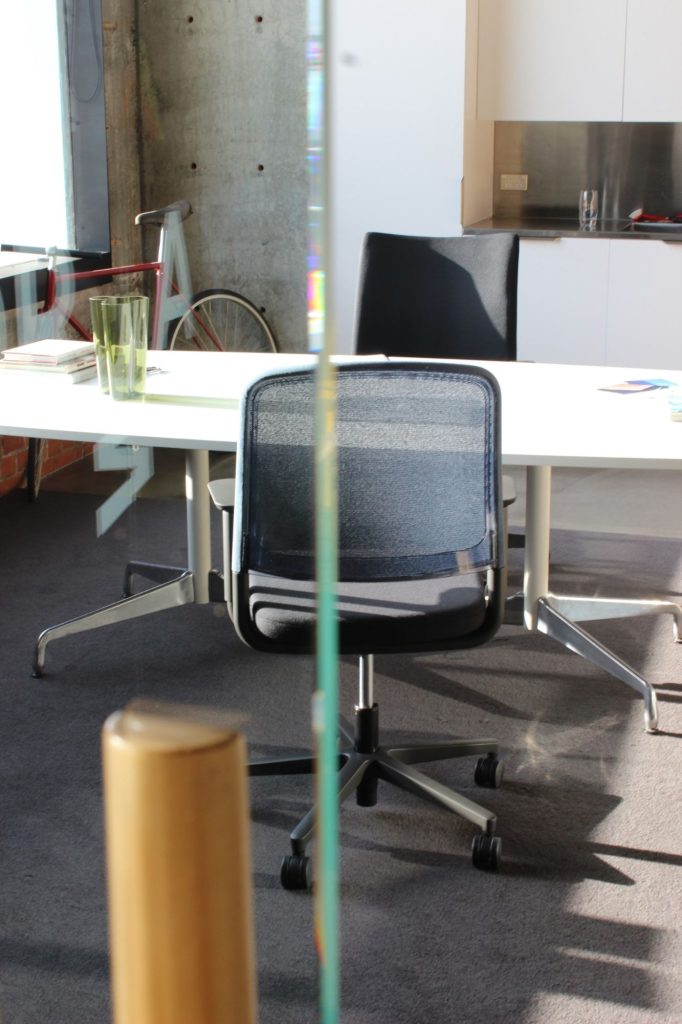
What distinguishes the Denn from other task chairs on the market is its soft curves and a design aesthetic that skews towards the residential. “It’s a chair that you’d comfortably (literally and physically) have sitting in your home,” says Zenith brand manager Matt Vescovo.
Bisman says it is “designing for longevity” that is an essential part of Formway’s approach. “There are two parts to making sure the product is going to be in the market for a long time,” he says. “There’s the testing side, making sure it’s strong and durable and exceeds global standards, and we’re also trying to design a product that is hopefully going to be timeless.”
With the post-pandemic return to the office, there has been an aesthetic style shift which has seen office furniture adopting an increasingly residential feel. Solving the challenge of encouraging people to leave the comfort of home is a hot topic in the design industry. Indirectly connected to this increased emphasis on wellbeing in the workplace, is a now non-negotiable focus on sustainability. What this means for product designers is that using post-consumer waste materials is an unofficial mandate. “All the structural elements [in the Denn chair] are using either nylons or polycarbonates that have high percentages of post-consumer recycled components,” Bisman says.
More world firsts for the studio on the edge of the world
While task-seating design may be a large part of their business, Formway recently turned their attention to the domestic seating market, specifically the dining chair. One might ask, why a dining chair? The answer is simple. “We spent a lot of time looking at areas in the home to determine which areas had human needs that weren’t being met,” Wilkinson says. “The dining space was that area. It’s the hub of the home, it’s where so many different activities take place. Every member of a household has different needs. The dining space, as the hub, is challenged to respond to all these different activities, as well as fluctuating numbers of people.”
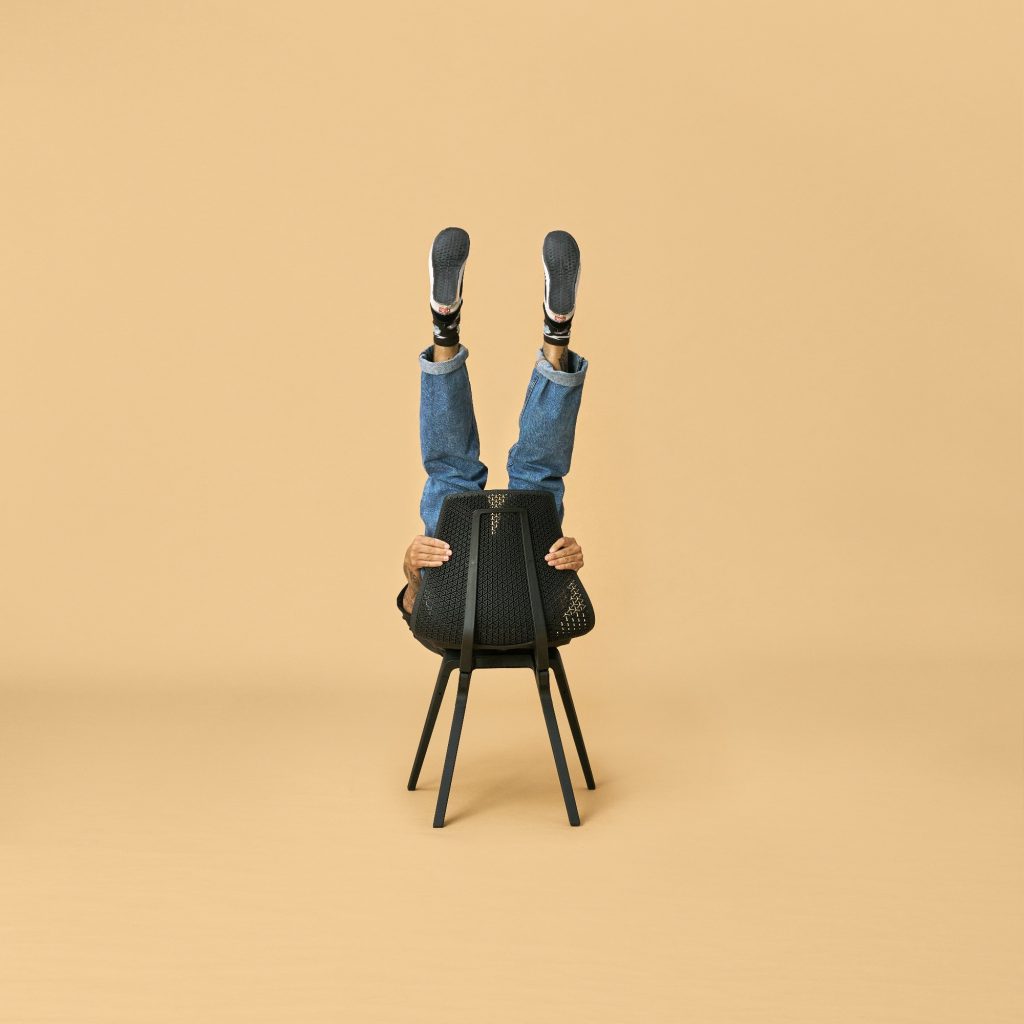
Formway’s first dining chair was the Noho Move. Made in Wellington from predominantly from recycled materials and formed in one ‘solid’ net, the chair applies all Formway’s years of task chair design learning to the dining chair. As the world’s first dining chair that moves as you move, together with its clean, sleek lines and geometric mesh pattern, it not only looks the part at a dinner party, but it’s also so comfortable no one will want to leave.
Formway’s next domestic chair, Lightly, won the Dezeen, Furniture design of the year award in 2023. Described on the Noho website as “a featherweight all-purpose chair made from plants and waste”, Lightly, like Noho Move, is Formway’s response to the ever-shifting ways people are living and working. With working from home now being a way of life, the dining table, and by extension the chair, have become even more important.
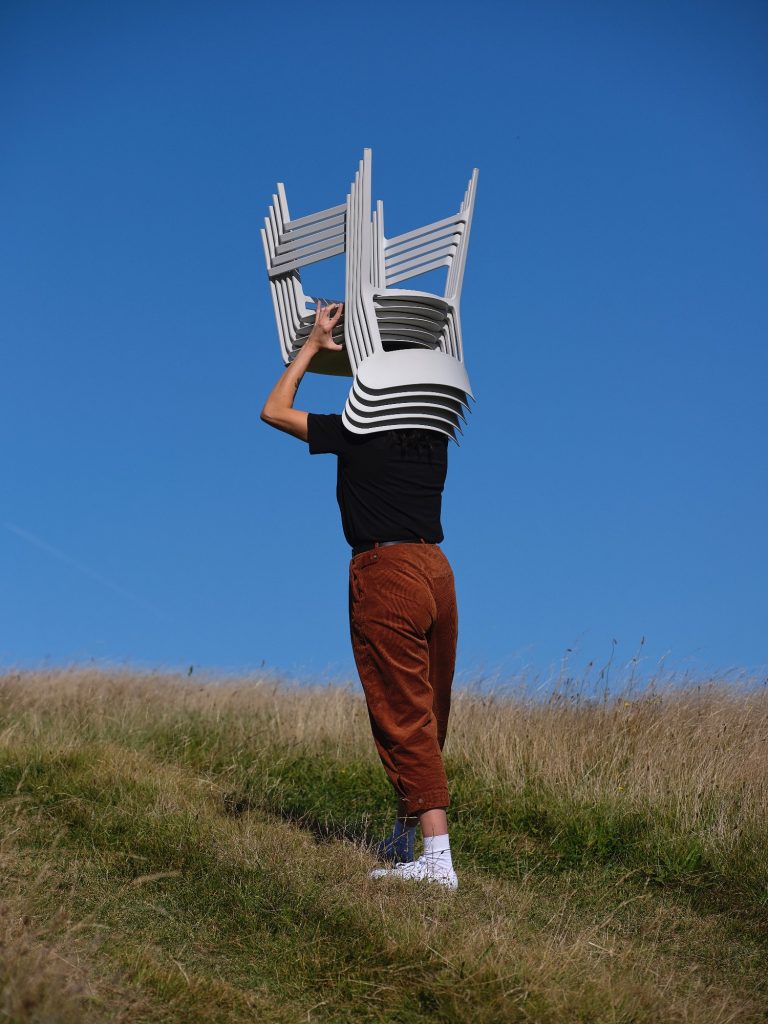
Both Noho Move and Lightly combine timeless design with best-in-class sustainability practices, including recycled or plant-based materials and localised, waste minimisation manufacturing processes. While manufacturing in Wellington may seem counterintuitive from an export perspective, doing so enables Formway to have full control over the process from end to end. This level of control is not simply about product quality. It’s about designing and manufacturing sustainably. In Māori culture, there is a principle of kaitiaki— being active guardians, or caretakers of the land, as well as the people the land sustains. Through local manufacture, Formway lives and breathes their sustainability ethos, demonstrating an authentic engagement with the deeply ingrained sense of responsibility to people and environment that many people and businesses from Aotearoa New Zealand possess.
Fluidity, intuition and invisibility
While no one can predict the future, the maxim that ‘the only constant is change’ is one the team at Formway lives by. “Motion [changing positions] is just integral to what we do,” Parker says. “We’re designing for people, and people need to move to do what they do. It doesn’t matter if it’s in the workplace, in the home, or in a public space. We allow people to move, to communicate, to collaborate, to be creative, to interact. Our job is to allow this to happen intuitively and fluidly.”
When asked what the ultimate chair would look like and how it would function, Wilkinson, Parker and Bisman unanimously agreed that it would be, for all intents and purposes, “invisible”. “It would be as if they [the user] were floating in space, they’re so unaware of it,” Parker explains.
For the team at Formway, quintessentially humble Kiwis, what drives them is not the world firsts or the awards. It’s about solving real problems for real people — not just Presidents and superstars. And if, in solving the problem, no one even notices the solution, they might consider themselves worthy of attention.
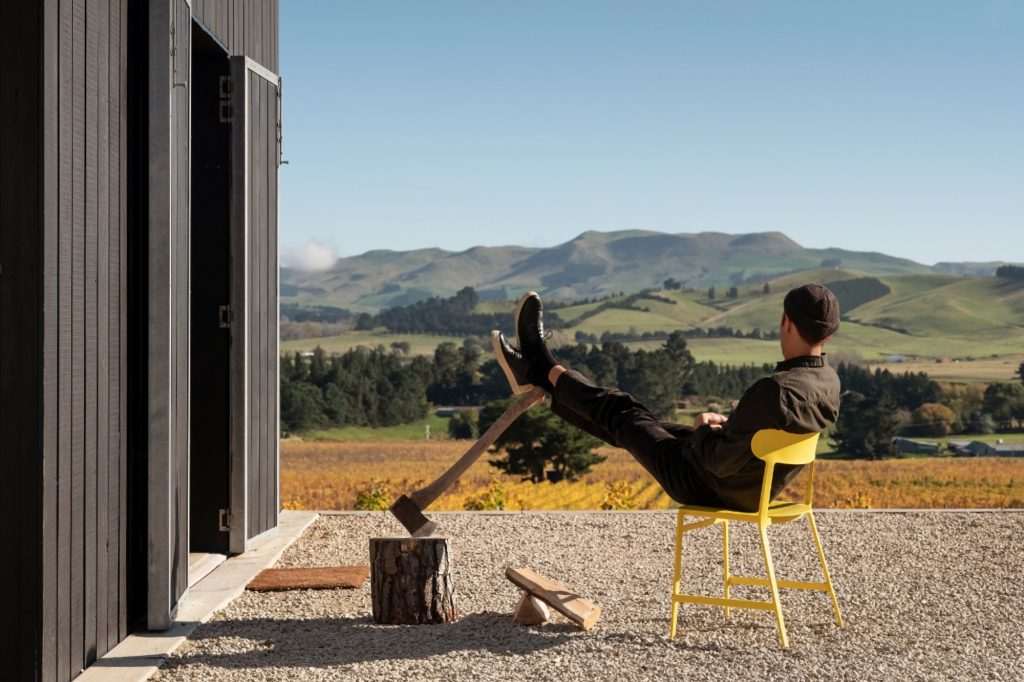
Photography supplied by Formway.
















